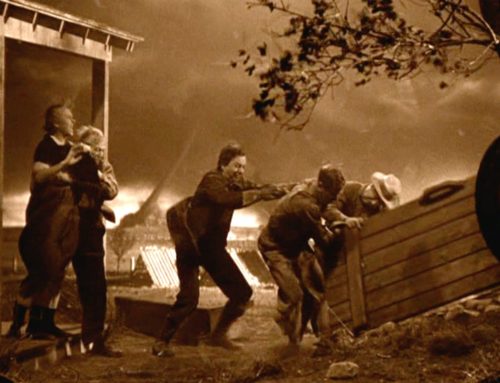You’re in the kitchen making dinner at the end of a long day. Your children are in their rooms doing homework. Just another day in the life, so to speak, and your mind is on anything and everything except what is about to change your life forever.
The doorbell rings and, like millions of Americans, you think that perhaps it’s an Amazon delivery or perhaps an unwanted solicitor. You take a peek outside and see the familiar uniform of a delivery man. He is holding a package and what appears to be one of those automated tracking devices.
Already comfortable in your own home, your guard is now completely down. You open the door with a smile, he smiles back, casts one last gaze over his should to ensure there are no witnesses, and instantly pushes his way into your home, locking the door behind him.
Your home, your sanctuary, your castle, is now a prison.
How to Recognize a Home Invasion
It’s important to recognize that a home invasion is different from a burglary or break in. Perhaps the easiest way to differentiate between the two is that a burglar is seeking to steal property and to avoid contact with a home’s occupants, while a home invader may be interested in property but is not concerned about occupants being home.
It’s that last part that’s important. Not only is a home invader not terribly concerned about encountering someone in the residence, he may in fact be seeking to make contact violently. It’s worth noting that a significant number of the violent assaults, rapes, and murders reported each year take place as part of a home invasion.
While home invasions aren’t all that rare – the Dept. of Justice claims more than 1 million occur each year – some of the most notorious cases have gripped the public’s attention. Perhaps this is because, again, we tend to see our homes as a protected oasis, a safe and familiar place removed from the unpredictability and occasional aggressiveness of the outside world. So when we hear about such cases, we sit up and take notice.
One such case occurred on July 23, 2007, when two paroled burglars broke into the Connecticut home of the Petit family. After bludgeoning the sleeping husband into unconsciousness and tying him up, the home invaders sexually assaulted his wife and the youngest of two daughters (ages 11 and 17).
After strangling the mother, they tied the two girls to their beds, drenched the home in gasoline and set it ablaze. (The girls died from smoke inhalation.) The father managed to free himself and escape from the cellar as the blaze consumed the home.

The Petit family home was set ablaze by home invaders with the family’s daughters tied to their beds. The case stunned millions of Americans, in large part because it occurred in a comfortable, supposedly secure upper middle class neighborhood.
What’s worth mentioning, here, is that the home invaders targeted the homeowner after spotting him and his wife at a local grocer. They would return in the early morning hours to launch their attack.
Both perpetrators were captured and are serving life sentences. The crime, which drew parallels to the infamous Clutter family murders portrayed in Truman Capote’s In Cold Blood, awakened many to the dangers of home invasion.
How to Survive a Home Invasion
Depending on the source, there is a variety of advice regarding how best to ensure you and your loved ones emerge from a home invasion unscathed. One point that all experts agree upon, however, is that you must be prepared at least for the possibility of a home invasion.
Preparation takes many forms, but here are the top lessons we’ve derived from conversations with security experts and independent research.
- Mental Preparation – Few if any expect to be attacked in their own home. Which is all the more important why you should mentally prepare for the possibility. By occasionally reminding yourself and your loved ones that it can happen, you’ll be at least moderately prepared if it does.
- Family Planning – If you share your home with others, ensure you have a code word to activate your plan, whatever it may be. There should be no guesswork, no uncertainty – if that word is used, action is required by all involved.
- Establish a Safe Room – Military.com strongly urges its readers to establish a safe room to where the family can retreat in the event of a home invasion. The magazine further urges its readers not to leave the safe room room until police arrive and escort you out.
- Run, Hide, Fight – Depending on how your home invasion progresses, most experts agree you’re going to need to choose from one or more of these options. Run to a safe room and hide, lock the door, call the police. If you don’t have a weapon, search the room for anything that might serve as a weapon – be prepared to fight for your life.
- Don’t be Passive – Make the invasion as painful as possible for the invaders – throw things at them, break windows and make noise, scratch and claw and gouge and hit. Do not submit to being tied up.
While some recommend owning a weapon, others are against weapons because they can be difficult to access in a surprise home invasion (the Petit family’s father was bludgeoned with a baseball bat in his sleep – a gun would not have helped him).
Regardless of where you stand on the issue of weapons, one issue all security experts agree on is this: your brain is your single best weapon. Use it.
How to Prevent a Home Invasion
As we like to say here, the best way to deal with intruders of any kind is to deter them from acting in the first place. (And if your deterrence tactics don’t work, remember to have a detection system in place so you have advanced warning to take action.)
Some of the top recommendations for deterrence include:
Get a Dog – Any dog, large or small, can deter home invaders because of their warning bark and, of course, propensity to attack. One of the suggestions we love best: place a very large dog water bowl on your front step or porch – this is likely to at least give the would-be home invader pause.
Plant Thorny Shrubs – Thorny plants can be painful to work through to reach a window. They have the added benefit of causing cuts, which bleed, which leave DNA evidence for police.
Harden Your Exterior – Heavy, reinforced doors can do wonders in dissuading home invaders.
Use a Peephole – If you don’t have a peephole in your front door, add one. And don’t open the door for anyone you don’t recognize. Demand to see credentials and if your spidey sense is tingling, don’t open.
Add Motion-Detection Lights – Add these lighting systems to illuminate the outside of your home in the event motion is detected.
Install an Alarm – Alarm systems – particularly the kind that blare out a warning – are particularly effective at sending invaders running.
Include Signage – Plant a warning sign in your front yard warning visitors you’ve got a dog or a gun or are a 100th degree black belt – anything to indicate your home is not a ‘soft’ target.
We hope these tips have been useful to you. Home invasions, though rare, can be devastating. The better prepared you and your family, the more likely you are to avoid a home invasion, or to at least emerge unharmed.


Leave A Comment
You must be logged in to post a comment.